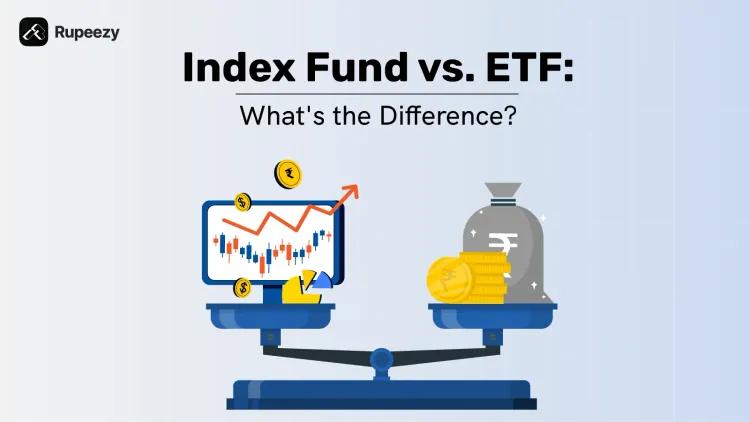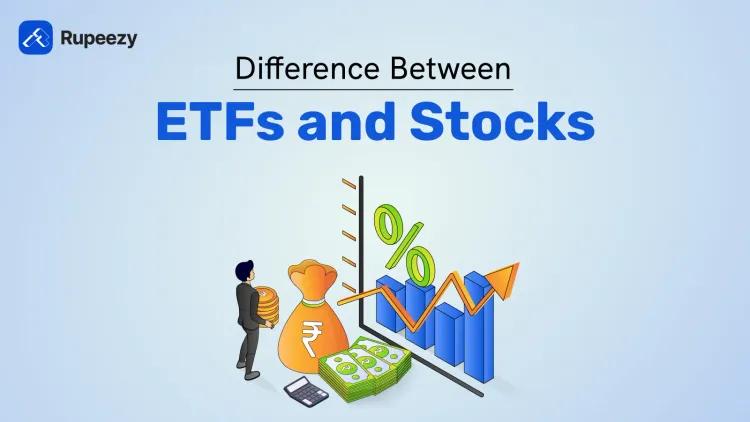What is Nifty BeES? (Features, Returns, Taxation and Cost)


00:00 / 00:00
Stock market investment has become one of the popular avenues for investors. Though it inherits risks, it has the potential to provide good returns for investors compared to other options. Due to existing risk, Investors often wonder which stocks to select when there are numerous stock options available in the market. However, the investment avenue has undergone transformative developments, giving rise to innovative options such as Exchange-traded Funds(ETFs). These are cost-effective and lower-risk options compared to direct investments in individual stocks. Nifty BeES is one of the popular ETFs that mirror the performance of the Nifty 50 Index.
In this article, we will explore what is Nifty BeES, How it works, nifty BeES advantages and disadvantages. So let's get started!
What are ETFs?
Before understanding Nifty BeES ETF, one should be aware of ETFs. ETFs are abbreviated to Exchange Traded Funds that fall under the category of mutual funds. These are the funds traded on the stock exchanges tracking a specific security like an index or commodity. These ETFs can be bought and sold the same way as normal stocks.
Generally, mutual funds try to outperform the indexes to yield good returns while ETFs do not outperform the underlying security but they try to be in line with the security it is tracking. It also offers high liquidity and lower expenses than mutual funds, which stands out as an attractive investment option for investors.
What is Nifty BeES?
Nifty BeES meaning: Nifty BeES (Benchmark Exchange Traded Scheme) was the first ETF in India that tries to reflect the performance of the Indian benchmark index Nifty 50. Having Characteristics of both mutual funds and stocks, each unit of Nifty BeES represents 1/100th of the Nifty 50 index value.
This ETF helps investors to efficiently diversify their portfolios and allows them to track the real-time changes in the price and trade in these funds.
How does Nifty BeES Work?
The purpose of ETF Nifty BeES is to replicate the Nifty 50 index, Hence they hold the stocks that mirror this index, and in the weightage that is proportional to the index. Each unit of Nifty BeES is equal to 1/100th of the Nifty 50 Index which allows investors to gain exposure to the top performing 50 companies in India.
Nifty BeES is an exchange-traded fund as the name implies it is traded on the exchanges just like regular stocks in dematerialized form in the rolling settlement. The investors can buy or sell them through brokerage platforms approved by SEBI. The return from this fund is generated by mirroring the Nifty 50 Index.
Further, Nifty BeES is a no-load scheme and has an annual expense ratio of a maximum of 0.80% including management fees. This expense ratio is derived from the daily average net assets which further reduces to 0.65% for assets over Rs.5 Billion.
Features of Nifty BeES
Nifty BeES is the first ETF in India, Came into existence on December 28, 2001, and is currently managed by Nippon India Mutual Fund.
Nifty BeES units represent 1/100th of the Nifty 50 Index
The total expense ratio including management fee is capped at 0.80% of daily average net assets and it will reduce to as low as 0.65% for assets exceeding 5 billion
It can be easily bought and sold like shares using a Demat account
Cost of Nifty BeES
The cost of investing in Nippon India ETF Nifty 50 BeES, commonly referred to as Nifty BeES, is relatively very inexpensive compared to actively managed mutual funds. The key expenses related to this ETF are as follows:
Expense Ratio
The Nippon India ETF Nifty 50 BeES expense ratio is very minimal at 0.04% only. This would mean that for every ? 10,000 invested, the charges are Rs.4 in a year. Hence, going by the declared expense ratios, they are considerably much lower compared with actively managed large-cap funds whose ratios normally range from 1-2.5%.
Brokerage Charges
While buying and selling Nifty BeES through a broker, the brokerage charges must be paid. Those differ from broker to broker but are usually very low in the case of ETFs.
No Exit Load
There is no exit load or redemption charge on the sale of Nifty BeES. This offers the facility for liquidity at any time as per your needs, which ensures no extra expenses.
Minimum Investment
The minimum amount with which one can buy Nifty BeES is the per-unit price, which stood at ?281.72 as of 03 September 2024. Subsequent purchases have no minimum amount.
In short, all the costs of investment in Nippon India ETF Nifty 50 BeES are at a very low level; hence, it is a very efficient way of taking exposure to the large-cap segment of the Indian stock market. The low cost helps maximize returns for the investors.
Nifty BeES Returns
Nifty BeES has provided an exponential return over past years where its expense ratio stood at 0.04% which is lower compared to other large-cap funds. Here are the returns yielded by Nifty BeES as of 3rd September 2024.
Time Duration | Returns |
1 Day | 0.13% |
1 Week | 0.94% |
1 Month | 2.09% |
6 Month | 13.8% |
1 Year | 31.35% |
5 Year | 141.36% |
Taxation in Nifty BeES
Nifty BeES are also like Index funds and they attract tax based on the holding period.
Short Term Capital Gains
The STCG of 20% is taxed for the gains that have a holding period of securities less than 1 year which is similar to taxation of STCG on equity investments.
Long Term Capital gains
The LTCG of 12.5% is taxed without indexation benefits for the gains that have a holding period of securities of more than 1 year.
Advantages of Nifty BeES
Cost Effectiveness
With total expenses including management fees capped at 0.80% of daily average net assets, Nifty BeES is among the schemes with the lowest expense ratios in India. It has an expense ratio that can go as low as 0.65% for assets above Rs.500 crore.
Convenience and Liquidity
Nifty BeES can be easily bought and sold like shares during market hours using a demat account. Since it is the oldest ETF in the market and has several investors, It has a high
liquidity. Hence, you can easily enter and exit your positions at your convenience in the ETF during trading hours.
Risk Diversification
Nifty BeES diversifies your portfolio into investments in the Top 50 Indian Companies forming Nifty50 companies. Hence when you invest n Nifty BeES, you’ll get exposure to 50 different stocks, thereby reducing your overall risk exposure
Transparency
Unlike mutual funds which the prices or the NAVs are determined at the end of the day, ETF prices are more transparent and are accessible in real time. By investing in the ETF that replicates the Nifty 50 index, you can easily track your investment's exact composition. Simply follow the Nifty 50 index and access readily available information on multiple platforms to stay updated effortlessly.
Disadvantages of Nifty BeES
Lower Returns
The main disadvantage of Nifty BeES is that it tends to provide less return than individually handled mutual funds. As Nifty BeES only mimics and imitates the performance of the Nifty 50 index, the growth potential in the index can set the limit for returns.
Over Diversification
Though diversification is useful, investment in Nifty BeES can cause over-diversification. A 50-company-stake might dilute the returns. At the same time, it might become incomprehensible for a few investors.
Tax Implication
Nifty BeES attracts taxation the same way an equity fund does. Short-term capital gains (less than 1 year of holding period) are taxed at 20%, while long-term capital gains(held for more than a year) are taxed at 12.5%. The incidence of tax may be at a higher rate compared to other available investment avenues.
How to Invest in Nifty BeES?
Open Account: Register on the Rupeezy website and complete all the formalities of KYC with ID, address proof, and photo.
Deposit Funds: Fill your Rupeezy Trading Account with funds.
Log In: Access Rupeezy by logging in with credentials.
Search Nifty BeES: by navigating the watchlist, Find Nifty BeES (NIFTYBEES) using the search icon.
Place Order: Choose the order type-market or limit-order quantity, review, and confirm.
Investment Tracking: Continued tracking of the investment and reading of Rupeezy's blogs for further information and insight.
Also Read: Best ETF in India
Should You Invest in Nifty BeES?
Nifty BeES is one of the popular ETFs that provide benefits for investors such as cost-effectiveness, flexibility, and diversification opportunities by following and tracking the well-known index Nifty 50. The index is comprised of India’s top-performing companies. Thus this ETF gives exposure to investors for these companies with lesser risk compared to direct investments in individual stocks. However, risks such as tracking errors and market fluctuations are present and investors should consider these factors along with a comparison of the expense ratio against alternative investment options.
Conclusion
In a nutshell, our guide on what are Nifty Bees explains that they are a cost-effective and diversified way to invest in India's top 50 companies through the Nifty 50 Index. One of those smart choices for the investor who wants broad market exposure without the hassles of picking individual stocks, given the considerably low expense ratio, high liquidity, and flexibility. Even though suffering from some drawbacks, it still constitutes a very useful tool in building a balanced portfolio.
In this article, we covered what is Nifty BeES, nifty BeES full form, How to invest in Nifty BeES, and Nifty BeES advantages and disadvantages. Explore our Rupeezy Blogs to keep yourself updated with stock market and finance-related content.
At Rupeezy, we facilitate easy access to Nifty BeES, so that you can make clever, efficient, and informed investment decisions that work towards your financial goals.
The content on this blog is for educational purposes only and should not be considered investment advice. While we strive for accuracy, some information may contain errors or delays in updates.
Mentions of stocks or investment products are solely for informational purposes and do not constitute recommendations. Investors should conduct their own research before making any decisions.
Investing in financial markets are subject to market risks, and past performance does not guarantee future results. It is advisable to consult a qualified financial professional, review official documents, and verify information independently before making investment decisions.

All Category










